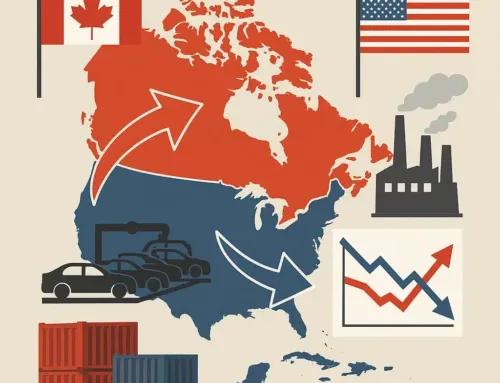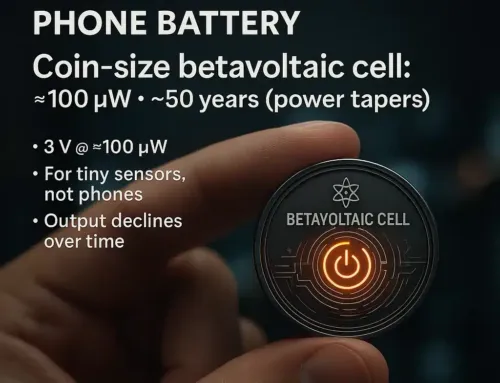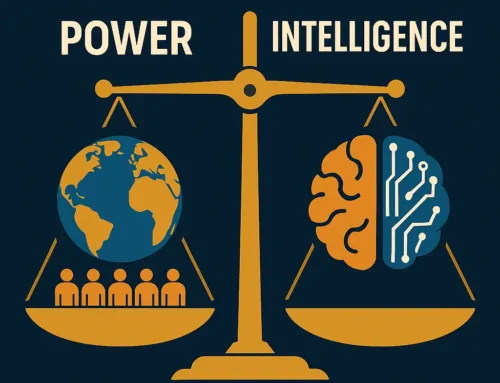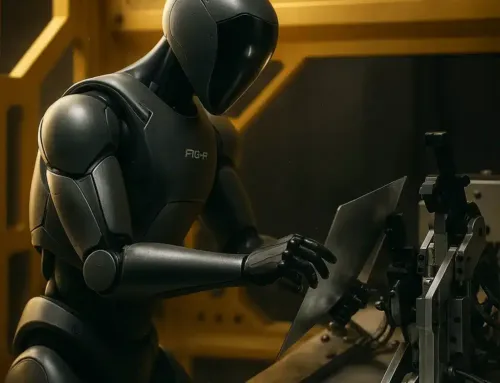
Approx. read time: 12.2 min.
Post: Bad News If You Bought a Tesla: “New” Cars May Not Be As New As You Think
Bad News If You Bought a Tesla: “New” Cars May Not Be As New As You Think
Tesla is once again at the center of controversy—this time, for selling cars marketed as “new” that may not be new at all. The electric vehicle pioneer, led by Elon Musk, is facing growing criticism from customers and watchdogs alike after multiple cases surfaced showing Tesla delivering vehicles that had been sitting outside for months, using used or weathered parts, and offering no clear disclosure to buyers.
For a company that’s built its brand on innovation and futuristic design, this story is less about cutting-edge technology and more about a basic principle: honesty in business.
The Core of the Controversy: Selling “New” Cars That Aren’t
When a customer buys a brand-new car—especially a Tesla, with a price tag that can easily exceed $80,000—there’s a reasonable expectation: the vehicle should be factory-fresh. That means no used parts, no environmental wear and tear, no undisclosed history. Yet recent reports suggest that Tesla has been delivering cars to customers that were manufactured months earlier, stored outdoors, and potentially exposed to damage—all without telling the buyer.
In some cases, these vehicles are being sold as new when they may have defects, degraded components, or simply don’t meet the pristine condition a buyer expects. Tesla’s failure to disclose this information is what has pushed the issue into the public spotlight.
The Cybertruck That Sparked It All
The story gained national attention after a Texas man ordered a Tesla Cybertruck in 2024 and was shocked to find that he could pick it up the same day. Anyone familiar with Tesla’s manufacturing and delivery process knows this is highly unusual. New Teslas are often made to order, with delivery timelines ranging from weeks to months.
The buyer became suspicious. When he asked Tesla how the truck was available so quickly, the response was even more troubling than expected: the Cybertruck had actually been manufactured four months earlier and had been sitting outside, exposed to the elements the entire time.
No garage. No protection. Just sitting in the open, baking in the sun, soaking in the rain.
Unsurprisingly, the customer refused delivery.
A Pattern, Not an Isolated Incident
This wasn’t a one-off case. Social media and forums lit up as other Tesla customers came forward with similar stories. Cybertrucks and other Tesla models had been spotted parked for weeks or months in lots and fields, collecting dust and weather damage.
This raised broader questions about Tesla’s inventory management and transparency practices. If cars are being stored outdoors and then sold as new, are customers being properly informed about what they’re buying?
In most industries, this kind of thing would prompt a recall or at least a formal investigation. But so far, Tesla’s response has been silence.
Why Storing Electric Vehicles Outdoors Matters
You might think: so what if the car sat outside? It’s still new, right? Not exactly.
Electric vehicles are particularly sensitive to prolonged exposure to the elements. Here’s why:
-
Battery degradation: EV batteries don’t like extreme temperatures. Sitting in the sun for months can impact the chemistry of the battery, reducing range and long-term performance.
-
Water intrusion: Rain and humidity can get into poorly sealed parts of the vehicle, especially if it’s been stationary for a long time. That means mold, rust, or electrical issues down the line.
-
Exterior wear: Paint can fade, and rubber seals can crack. Even exposure to dust and pollution can start to erode the finish of a vehicle left outdoors.
-
Interior damage: Sunlight through the windshield can warp dashboards, fade seats, and cause interior plastic to degrade faster than expected.
These aren’t cosmetic concerns—they directly impact the value, performance, and longevity of the car.
Tesla’s Silence: No Statement, No Explanation
One of the most frustrating parts of this situation isn’t just the questionable business practice. It’s the company’s total lack of response.
No official apology. No clarification. No acknowledgment that customers who paid top dollar for a premium product may have received something less.
This isn’t just bad PR—it’s damaging consumer trust. For a company that thrives on brand loyalty and word of mouth, that’s a big problem.
Tesla is not a niche automaker anymore. It’s a publicly traded company with global operations. The least it can do is offer transparency when customers raise legitimate concerns.
A Business Under Pressure
Behind the scenes, there’s more going on than meets the eye. Tesla has faced several challenges in 2024 and 2025:
-
Overproduction: With competition increasing in the EV space, Tesla may have ramped up production only to see demand fall short—especially for high-profile models like the Cybertruck.
-
Inventory glut: Warehousing costs money. If vehicles don’t sell fast enough, they sit in lots. In Tesla’s case, many of these lots are outdoors.
-
Global strategy shift: Tesla has started seeking new markets for its EVs, including Saudi Arabia, in an effort to offload unsold inventory.
-
Cost-cutting moves: The company has reportedly laid off workers, slashed prices, and begun experimenting with new tactics to move vehicles—including offering “immediate delivery” for units that have already been sitting idle.
All of this suggests that Tesla may be struggling to balance supply with demand—and customers are paying the price.
Used Parts, Questionable Repairs, No Disclosure
Another layer to the controversy is the use of refurbished or used parts in repairs—or even new car assembly—without full transparency. Some Tesla customers have shared stories of their “new” cars being delivered with replaced parts or minor body damage that had been touched up before delivery.
In a traditional dealership model, a car with minor repairs or prior damage is typically sold at a discount or labeled accordingly. Tesla’s direct-to-consumer sales model removes that layer of disclosure—unless the company makes the effort to share the information, buyers are left in the dark.
This is especially troubling when a buyer is paying for what they believe is a new car with no history.
How Tesla’s Direct-Sales Model Makes This Worse
Tesla sells directly to consumers. There are no independent dealers. That gives the company complete control over the buying process—but it also removes a layer of accountability.
In a typical dealership, buyers have access to detailed vehicle histories, inventory inspections, and third-party disclosures. Tesla’s system? Buyers often sign paperwork and finalize transactions digitally, without even seeing the car first.
That’s great for convenience. But not so great when it comes to catching issues like:
-
Delivery damage
-
Manufacturing defects
-
Improper storage
-
Reused or refurbished parts
Without transparency, Tesla holds all the cards.
What Should Customers Do?
If you’re planning to buy a Tesla—or any car, really—this controversy is a wake-up call. Here’s how to protect yourself:
-
Ask for the manufacturing date. This will tell you how long the vehicle has been sitting around before delivery.
-
Inspect the vehicle thoroughly. Before you sign anything, look for wear and tear, paint defects, or signs of environmental exposure.
-
Check the odometer. A “new” car should have only a few miles, primarily from testing.
-
Request documentation. Ask if the vehicle has had any repairs, part replacements, or paint touch-ups.
-
Don’t be afraid to walk away. If anything feels off, don’t sign. It’s your money, and your right to demand clarity.
The Bigger Picture: What This Says About Tesla
Tesla is no stranger to controversy. From labor practices to autopilot safety issues to Elon Musk’s Twitter antics, the company often finds itself in the headlines. But this issue cuts to the heart of what customers expect from a premium brand: honesty.
When you spend $80,000 or more on a vehicle, you’re not just buying a product. You’re buying trust. You’re investing in a brand that promises innovation, quality, and cutting-edge technology.
If that trust is broken—if a “new” car is actually months old, exposed to the elements, or assembled with used parts—then what exactly are you paying for?
Final Thoughts: This Isn’t Just About Tesla
Tesla may be the face of this controversy, but the implications go beyond one company. As more automakers shift to direct-to-consumer models, transparency must be non-negotiable. Consumers should never have to guess whether their vehicle is actually new.
And Tesla, for all its innovation, needs to remember this: You can’t sell a vision of the future if you ignore the basics of customer trust today.
Until the company steps up with real answers and clear standards, every buyer should beware—and double-check what “new” really means.
How to Protect Yourself: A Deep Dive Into Verifying New Car Condition
When buying a Tesla or any new car—especially through a direct sales platform—here are expanded steps you can take to do your own due diligence before finalizing a purchase.
🔍 1. Check the Build Date
Ask for the Vehicle Identification Number (VIN) before purchase. Once you have it, you can:
-
Decode the VIN using tools like NHTSA’s VIN Decoder to get the vehicle’s manufacture date.
-
Look for the compliance label inside the driver’s door jamb — this will show the month and year of manufacture (you’ll need this if inspecting the vehicle in person).
If the vehicle was built more than 2–3 months before your delivery date, ask where it’s been stored and why it wasn’t delivered sooner.
🧾 2. Run a Title and History Check
Even if Tesla says it’s “new,” run the VIN through third-party services to confirm there are no surprises. Use:
-
Carfax – For accident history, service records, and mileage.
-
AutoCheck – For auction or fleet use, manufacturer buybacks, and prior registration.
-
NICB VINCheck – To see if the car has ever been reported stolen or salvaged.
You may not find issues if Tesla hasn’t titled the car yet, but this step is still important, especially for cars that may have been returned or damaged and refurbished.
🌦️ 3. Look for Weather-Related Wear and Tear
Request or conduct a thorough visual inspection:
-
Check exterior paint for fading, water spots, or swirl marks.
-
Inspect rubber seals around doors, windows, and the trunk—sunlight can dry and crack them.
-
Look under the hood and in the trunk for dust buildup, rust spots, or corrosion.
-
Use a moisture meter or bring a detailer to detect signs of water intrusion or mold inside the cabin.
If inspecting remotely (before pickup), ask the delivery team to send time-stamped photos and video walkarounds, including underbody shots and door seals.
🔧 4. Ask About Replaced or Used Parts
It’s rare, but some buyers have reported delivery with repaired or replaced parts. Always ask:
-
Has the vehicle undergone any repairs post-production?
-
Are any parts—especially battery modules, tires, or body panels—refurbished or swapped?
Tesla has been known to reuse parts in service centers. Make sure you’re not getting a frankensteined vehicle sold as new.
📸 5. Review Online Forums and Community Reports
Tesla owners are vocal. Use the power of collective knowledge:
-
Tesla Motors Club – Search threads on VIN ranges, defects, paint quality, and delivery issues.
-
Reddit’s r/TeslaMotors – Firsthand delivery reports, photos, and complaints.
-
InsideEVs Forums – Industry discussions about battery health, storage practices, and resale issues.
If others are having issues in the same region or production batch, that’s a red flag.
🧑💼 6. Ask for Written Confirmation
This may seem basic, but get everything in writing:
-
Ask Tesla to confirm in writing that the car has not been previously delivered, titled, repaired, or stored outdoors.
-
If they hesitate or refuse, that’s your sign to pause the deal.
Bottom Line: Trust, But Verify
Tesla’s innovation can’t be denied—but neither can the pattern of questionable practices. This latest controversy underscores the importance of buyer vigilance in an age where “new” might not mean what it used to.
Before you sign the dotted line, run every check you can. Use the tools available, ask tough questions, and walk away if the answers don’t add up.
Because when you’re spending $60,000–$100,000 on a car, you’re not just buying a product. You’re buying trust. And no customer should have to find out the truth after they drive off the lot.
Tesla has faced criticism for selling “new” Cybertrucks that were actually manufactured months earlier and stored outdoors, potentially damaging the vehicles. This issue raised concerns about transparency and the quality of “new” cars, especially considering their high price point.
- A Texas customer ordered a Cybertruck and was surprised to be able to pick it up immediately, rather than waiting for production.
- Tesla explained the car was manufactured months ago and stored outside, which exposed it to the elements.
- The customer rejected the vehicle due to its pre-existing exposure, raising concerns about the overall situation.
- Similar reports of Cybertrucks being delivered after extended outdoor storage surfaced, suggesting widespread issues.
- Electric vehicles like the Cybertruck are vulnerable to damage from prolonged outdoor exposure.
- This can include issues with battery capacity, humidity buildup inside the vehicle, and damage to the paint finish from sun exposure.
- The exterior of the Cybertruck, made of stainless steel, might also be susceptible to rust or other degradation over time if exposed to the elements for extended periods.
- The company has not offered a public explanation or solution for the issue, leading to customer frustration and feelings of being scammed.
- This lack of transparency has damaged Tesla’s reputation and raised questions about the quality control of their vehicles.
- Before purchasing a new Tesla, ask about the manufacturing date of the vehicle.
- Inspect the car for any signs of prior outdoor storage, such as fading paint, water stains, or dirt accumulation.
- Carefully examine the vehicle’s condition before completing the purchase, regardless of the company’s reputation.
- Edmunds Jessica Caldwell, an analyst at Edmunds, reported that brand loyalty for Tesla is declining.
- This situation, along with concerns about Elon Musk’s public involvement in politics, may contribute to a decline in brand loyalty for Tesla.
- While Tesla’s vehicles are generally efficient EVs with advanced technology, they are facing challenges, including increased competition from other EV brands.
- Some Tesla owners are also selling their vehicles due to political disagreements with Elon Musk.









